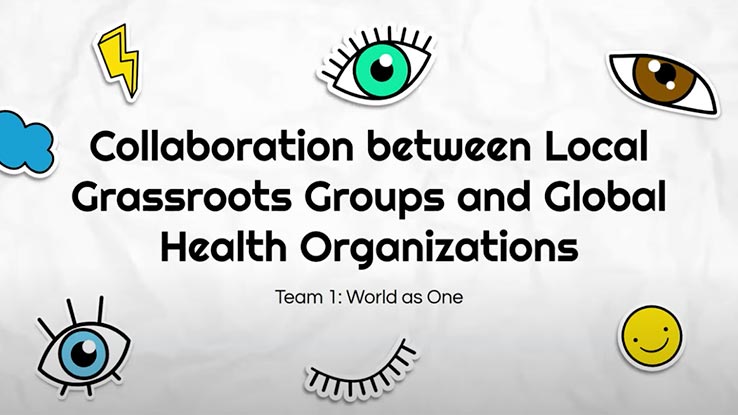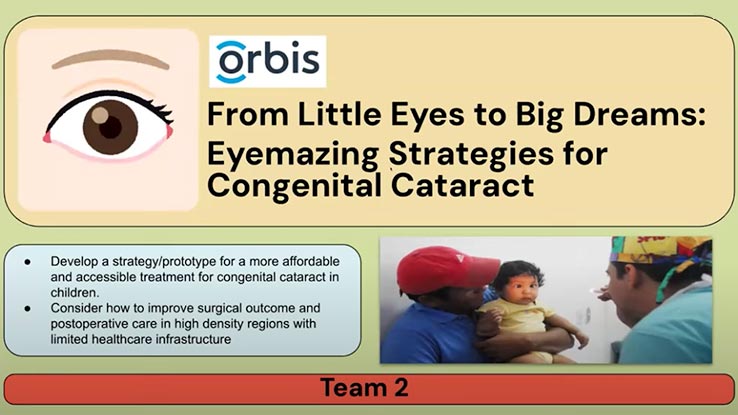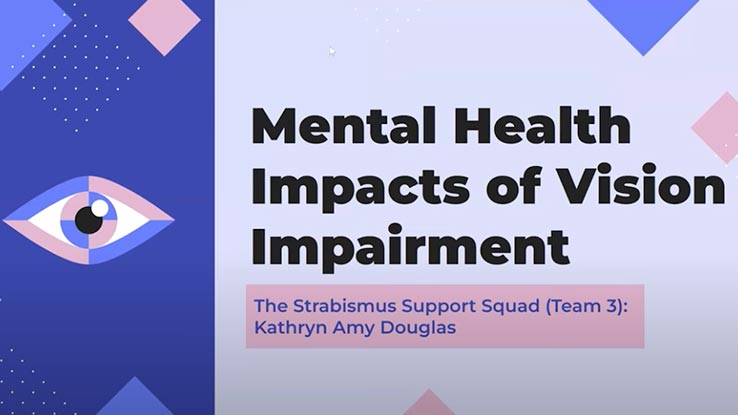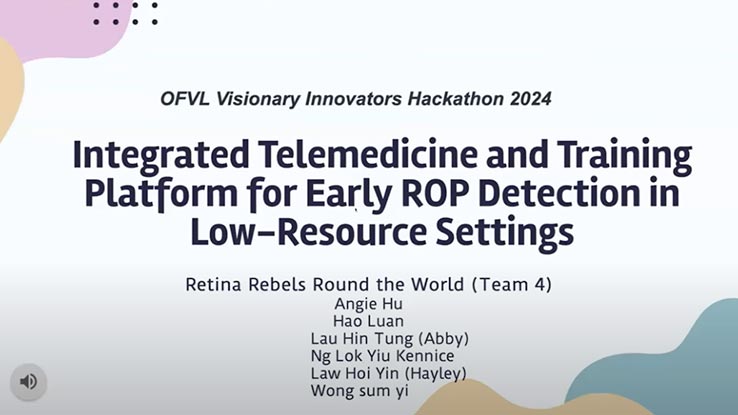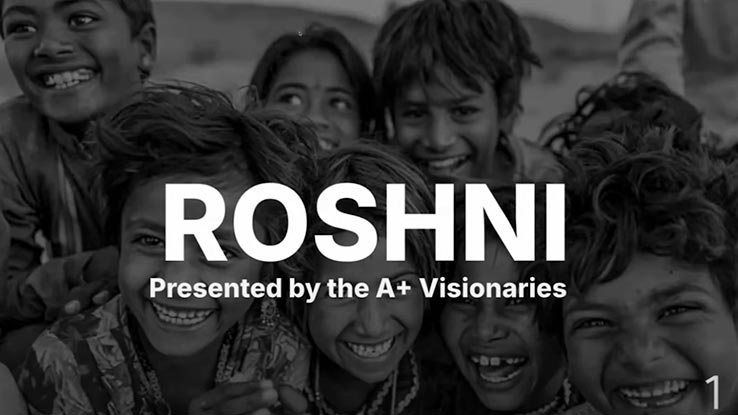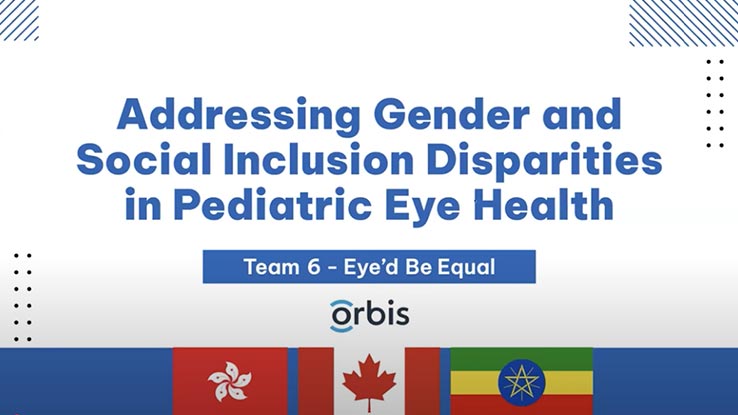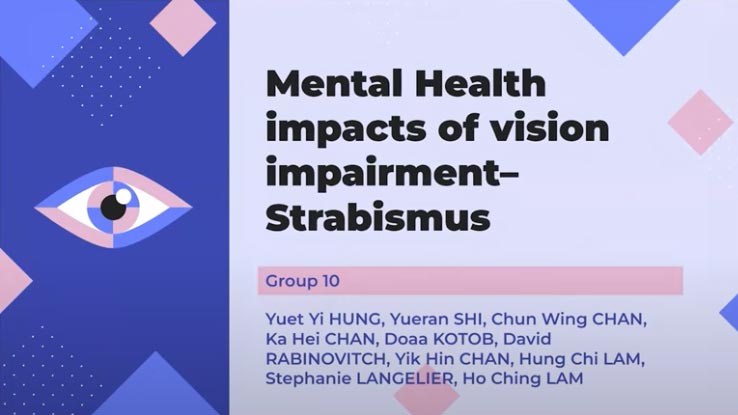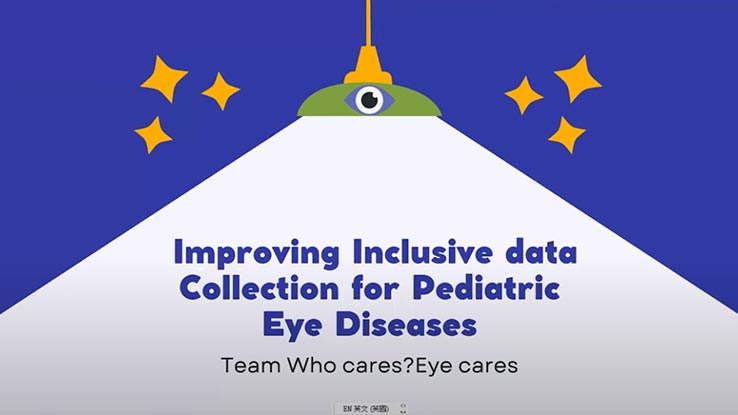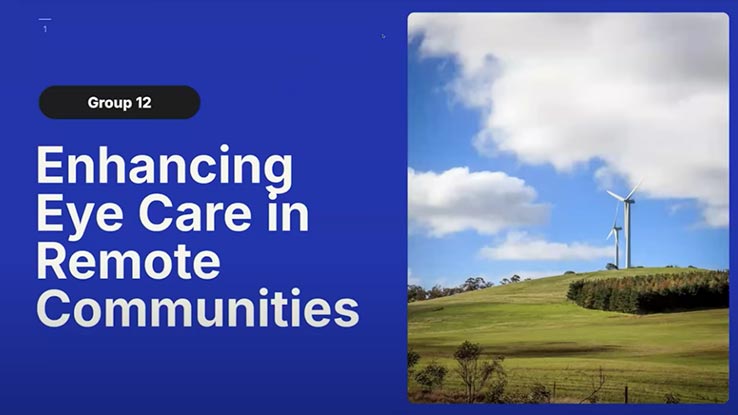Student
Presentations
Below you’ll find a listing of all Hackathon Student Presentations. Congrats to all those who participated and to the award winners.
Team 1: World as One
Responding Prompt Three (3): Collaboration Between Local Grassroots Groups and Global Health Organizations
Students from: The Hong Kong Polytechnic University, The University of Hong Kong, Ethiopia, and Canada
Team 2: From Little Eyes to Big Dreams
Responding to Prompt Five (5): Innovative Solutions for Pediatric Cataract.
Students from: The University of Hong Kong, Lingnan University, The Chinese University of Hong Kong, The Hong Kong Polytechnic University, and Canada
Team 3: The Strabismus Support Squad
Responding to Prompt Seven (7): Mental Health Impacts of Vision Impairment.
Students from: The University of Hong Kong, Lingnan University, Canada, and Ethiopia
Team 4: Retina Rebels Round the World
Responding to Prompt Four (4): Early Detection of Retinopathy of Prematurity (ROP)
Students from: The University of Hong Kong, The Hong Kong Polytechnic University, Canada, Ethiopia, and the United States.
Team 5: A+ Visionaries
Responding to Prompt Eight (8): Addressing Vision Impairment Due to Vitamin A Deficiency:
Students from: The Hong Kong Polytechnic University, Lingnan University, The University of Hong Kong, Hong Kong Metropolitan University, Canada, and Ethiopia
Team 6: Eye’d Be Equal
Responding to Prompt One (1): Addressing Gender and Social Inclusion Disparities in Pediatric Eye Health.
Students from: The Hong Kong Polytechnic University, The University of Hong Kong, Canada, and Ethiopia
Team 8: CrossConnect
Responding to Prompt Six (6): Enhancing Eye Care in Remote Communities.
Students from: The University of Hong Kong, The Chinese University of Hong Kong, Canada, the United States, and Ethiopia
Team 10
Responding to Prompt Seven (7): Mental Health Impacts of Vision Impairment.
Students from: The University of Hong Kong, Hong Kong Metropolitan University, The Hong Kong Polytechnic University, China, Egypt, and Canada.
Team 11: Who Cares? Eye Care!
Responding to Prompt Two (2): Improving Inclusive Data Collection for Pediatric Eye Diseases.
Students from: The University of Hong Kong, Lingnan University, The Chinese University of Hong Kong, The Hong Kong Polytechnic University, the United Kingdom, Canada, and China.
Team 12: Eyenovators
Responding to Prompt Six (6): Enhancing Eye Care in Remote Communities.
Students from: The Hong Kong Polytechnic University, The University of Hong Kong, Hong Kong Metropolitan University, Canada, Ethiopia, and China.
Winning Teams
Team 1
EYEconics
Team 5
The Clarifiers
Team 7
Award Winners
Prompts
The hackathon aimed to address critical global pediatric challenges through innovative solutions. Participants were tasked with tackling nine distinct prompts that focused on improving the health and well-being of children worldwide. These prompts spanned various areas, from enhancing access to medical care in underserved regions, developing more effective pediatric treatments, and addressing nutrition and mental health issues, to leveraging technology for health monitoring. Each prompt encouraged creative problem-solving, collaboration, and the application of cutting-edge ideas to resolve pressing issues facing pediatric healthcare on a global scale.
Gender Equity and Social Inclusion (GESI)
- ONE (1): Addressing Gender and Social Inclusion Disparities in Pediatric Eye Health
- Prompt: Develop a community outreach program to address gender disparities in pediatric eye care uptake that is scalable and sustainable. How can cultural and social barriers be overcome to ensure equal access to eye health services for kids of all genders?
- TWO (2): Improving Inclusive Data Collection for Pediatric Eye Diseases
- Prompt: Develop a simple yet effective data collection and management system for tracking pediatric eye diseases and treatment outcomes using a gender equity and social inclusion lens at a nationwide level. How can this system be implemented in regions with limited technological resources?
- THREE (3): Collaboration Between Local Grassroots Groups and Global Health Organizations
- Prompt: Design an initiative for collaboration between local grassroots community organizations/groups, healthcare providers and international organizations to enhance pediatric eye care, specifically targeting systematically marginalized populations. What are the key components of a successful consortium/partnership, and how can it be sustained over time?
Rural vs Urban considerations
- FOUR (4): Early Detection of Retinopathy of Prematurity (ROP)
- Prompt: Design a low-cost, portable screening tool or device for early detection of Retinopathy of Prematurity (ROP) in newborns in low-resource settings. How can this tool be used effectively in remote areas with limited access to specialized healthcare?
- Five (5): Innovative Solutions for Pediatric Cataract
- Prompt: Develop a strategy or a prototype for a more affordable and accessible treatment for congenital cataract in children. Consider how to improve surgical outcomes and post-operative care in high density regions with limited healthcare infrastructure.
- Six (6): Enhancing Eye Care in Remote Communities
- Prompt: Create a mobile health initiative that provides comprehensive eye care services to underserved populations. How can telemedicine and mobile technology be leveraged to improve access to eye exams, treatments, and follow-up care?
Integration of eye care into public health measures (mental health and beyond)
- Seven (7): Mental Health Impacts of Vision Impairment
- Prompt: Design a support system or educational program that addresses the mental health needs of children and their families dealing with strabismus. Consider how to incorporate psychological support and awareness into existing eye care practices.
- Eight (8): Addressing Vision Impairment Due to Vitamin A Deficiency
- Prompt: Propose an intervention program to combat pediatric vision impairment caused by vitamin A deficiency. Include components for both immediate treatment and long-term prevention, and outline how to integrate this program into existing community health frameworks.
- Nine (9): Affordable Eyewear Solutions
- Prompt: Propose a cost-effective solution for providing prescription eyewear to children in low resourced settings as part of an integrate health care approach. How can you ensure the sustainability and scalability of this solution?
Considerations for Teams
- Resource Constraints: Be mindful of the limited resources available in many developing countries and design solutions that are both innovative and practical.
- Cultural Sensitivity: Ensure that your solutions are culturally appropriate and consider local customs and practices.
- Sustainability: Focus on creating solutions that are sustainable and can be maintained by local healthcare systems over the long term.
- Scalability: Consider how your solutions can be scaled up to reach larger populations if successful.
